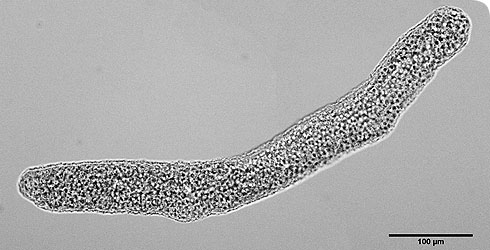Buddenbrockia plumatellae
Buddenbrockia plumatellae is a tiny parasitic worm of freshwater bryozoans (moss animals). First described in 1910 by the German natural historian, Olaw Schröder, it has been encountered by only a few scientists since.
Infection with Buddenbrockia reduces growth and reproduction and may cause mortality of bryozoan hosts (Canning et al. 2002). There is also some evidence that carp and minnow are susceptible to Buddenbrockia infections transmitted from bryozoans.
The anatomy and life-style of this tiny worm are so unusual that until very recently it remained unclear where to place it in the animal kingdom.
Species detail
Mature Buddenbrockia plumatellae are colourless, whitish worms, with grainy mass of internal ovoid spores.
The spores have 2 sporoplasms and 4 polar capsules.
Classification
Myxozoan diagnostic characters include:
- anatomy of the spores
- the ultrastructure of the polar capsules
- DNA sequence data
Within the Myxozoa the genera Buddenbrockia and Tetracapsuloides are united in the Malacosporea.
Malacosporean characters include
- production of soft spores
- utilisation of freshwater bryozoans as primary hosts
- development of true tissues
-

Taxonomy
Find out about the form and structure of Buddenbrockia plumatellae, learn about similar looking species and read what studies have suggested about the evolution of the species.
-

Biology
B. plumatellae worms occur in the body cavities of freshwater bryozoans. While many aspects of its biology are yet to be discovered, find out current information about the size, lifecycle and life expectancy of this species.
-

Habitat and distribution
Learn where in the world, as well as the host species, that Buddenbrockia plumatellae is known from, what is known about its typical habitats.
-

Host infections
Discover the interactions that Buddenbrockia plumatellae has with other species and the impact it has on these species.
-
Conservation
Discover the current conservation status of Buddenbrockia plumatellae and read a risk statement regarding the species based on a closely related myxozoan species.
-

References
Get reference material for Buddenbrockia plumatellae.
Images
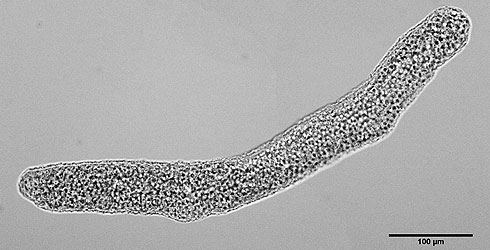
Buddenbrockia plumatellae, mature worm. Light micrograph (Photo: A. Gruhl).
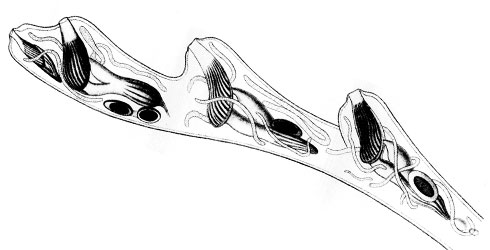
Buddenbrockia plumatellae worms in a colony of Plumatella sp. Drawing from original species description (Schröder 1910).
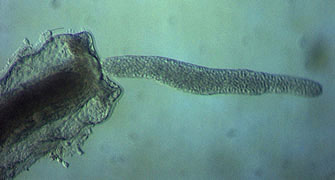
Buddenbrockia plumatellae worm leaving bryozoan host. Light micrograph (Photo: S. Tops).
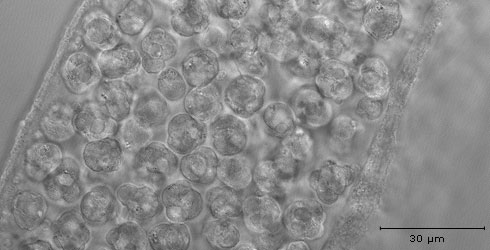
Detail of spores in a mature worm. Light micrograph (Photo: A. Gruhl).
Note
This classification is the one that is best supported but the myxozoans have not formally been recognised as cnidarians.
Author
Dr A Gruhl
Post doctoral fellow, Department of Zoology.
